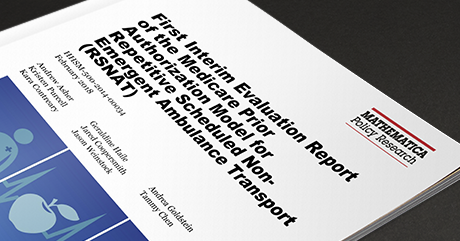Medicare Prior Authorization- Part II- Impact!
Welcome!
Thanks for stopping by for Part II of our blog recap of the findings from the recently published interim evaluation report on Medicare Prior Authorization.

Last week, we capsulized the findings as published by government contractor Mathematica Policy Research. This week, we will briefly take a look at the impact, now and for the future.
How’d we get here?
When Dutch Physician Willem Kolff created the “artificial kidney” dialyzer in 1943, he could have never foreseen the massive impact on the lives of patients around the globe. Even despite Nazi occupation of his homeland, Kolff pushed his invention forward after helplessly watching one of his patients suffer an agonizing death due to advance kidney failure.
Fast forward 19 years later to 1962 when University of Washington medical professor Dr. Belding Scribner found a way to bring dialysis treatments to the masses by developing the first-ever outpatient procedure.
Once this process was refined and the benefits to End Stage Renal Disease patients was proven, outpatient dialysis centers mushroomed from the hospital setting to locations dotted across the map over the next few decades.
With the growth of treatment possibilities, came the need for transport of patients to and from such treatments.
Big Bucks!
It didn’t take long for ambulance providers and suppliers to figure out that 6 transports per week per patient could compute to a nice predictable and steady cash flow.
That’s where the problem started.
To provide some context, we once had a for-profit ambulance proprietor tell us that it was a “no-brainer” for him to find as many dialysis patients that he could convince to use his service for transport because just 3 or 4 patients meant a revenue stream of six figures per year with relatively minimal effort and costs expended on his part to provide the service. And…the bulk of his revenue came from “guaranteed” (his words) government entitlement programs (ie. Medicare.)
And…he was right- at the time.
Then the ball dropped…
However, many of the RSNAT dialysis-trip ambulance providers were not the norm for the EMS industry. The ambulance operators were hastily organized, often did not follow medical necessity guidelines and in some cases fraudulently completed false documentation in order to justify payment from Medicare for these trips. These unscrupulous operators were “stealing from the government” to the tune of many millions of dollars and something had to be done.
The Medicare Prior Authorization program was designed as a way to combat this fraud and abuse of the system. In Year 1 of the Prior Authorization demonstration project, the Mathematica report showed a drop in RSNAT Medicare ambulance utilization by 65.78%, most of which represented transport of ESRD patients to and from dialysis.
When expenditures dropped for RSNAT per beneficiary by a whopping $432, a 90 percent decrease, so did the number of ambulance providers in the model States. In fact, average quarterly expenditures on all Medicare ambulance services per beneficiary with ESRD declined by $523 which in all translated to an approximate Medicare savings to the tune of $171 million.
The decline in the number of EMS agencies per 100,000, according to Mathematica, checked in at 38 per 100,000 Medicare beneficiaries down from 46 per 100,000 in 2012. In Year 2 of the project the drop dipped to 30 per 100,000 nationwide with the model states falling to 25 EMS agencies per 100,000.
The tension arising from the findings of the study, does make note that there was a spillover negative effect on legitimate ambulance providers and suppliers who were transporting truly medically-necessary patients to and from treatments. Additionally, the report noted a spike in the use of emergency ambulance services soon after program inception and while hard to extrapolate, there did seem to be a direct correlation between fewer transport options for patients who then extended their dialysis cycle to the point that their condition worsened and became emergent or they simply dialed 9-1-1 to request transport because they could find no other viable option once the smaller, dialysis-centric EMS agencies folded from the cash flow drain.
The decrease in the number of EMS agencies was even further magnified in Pennsylvania and New Jersey where, coupled with prior authorization; a moratorium on the credentialing of newly established non-emergency transport providers was put in place by CMS for the geographical area comprising the greater Philadelphia metropolitan area.
Change and Dialogue
This first report now begins a dialogue between the ambulance industry and Congress by way of CMS. A legislative roadblock has now been overcome allowing CMS to extend the program to the entire United States.
It will be interesting to see if that takes place in the days ahead.
Additionally, we now fully know that there was an over-utilization of services with some ambulance operators that were not totally playing by the rules. Using this report and further analysis, we all can come to a consensus on how to best legally use Medicare dollars wisely while still providing services to those patients who truly require RSNAT transportation.
Stay tuned!